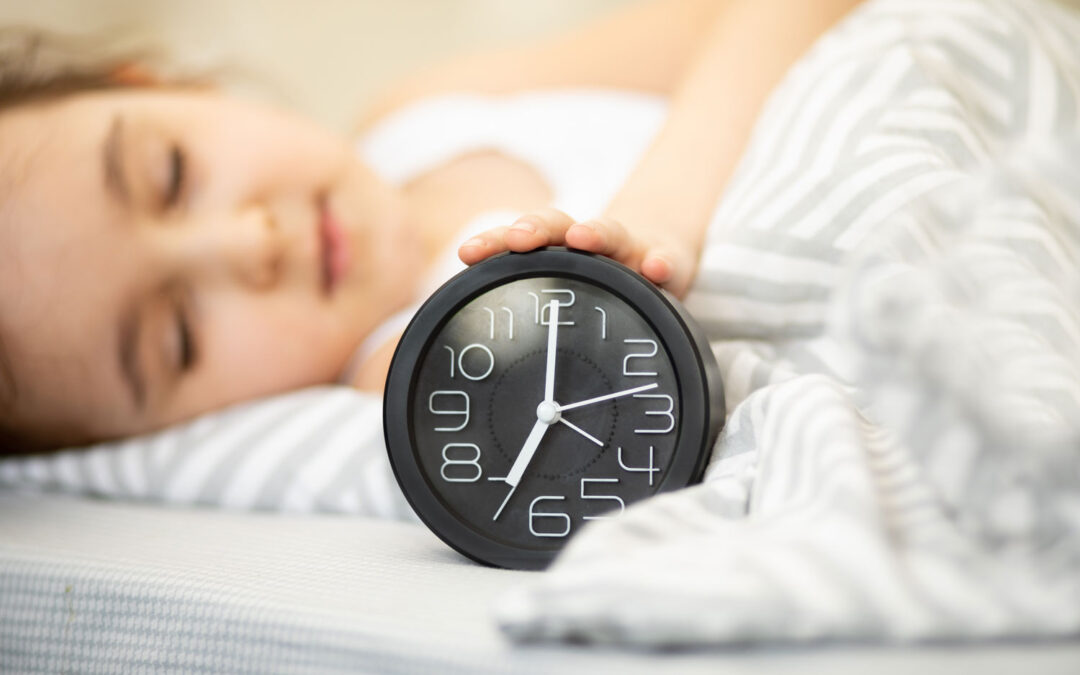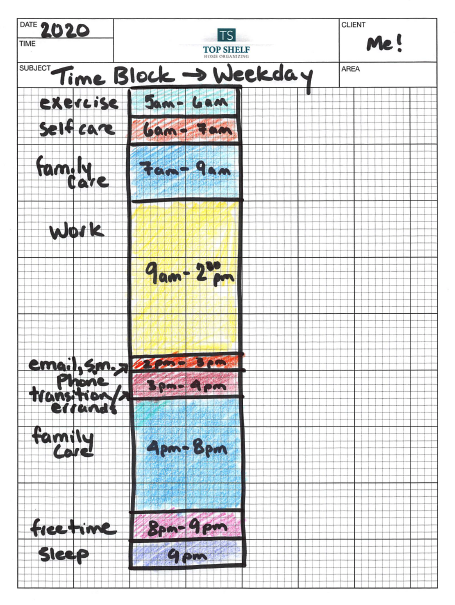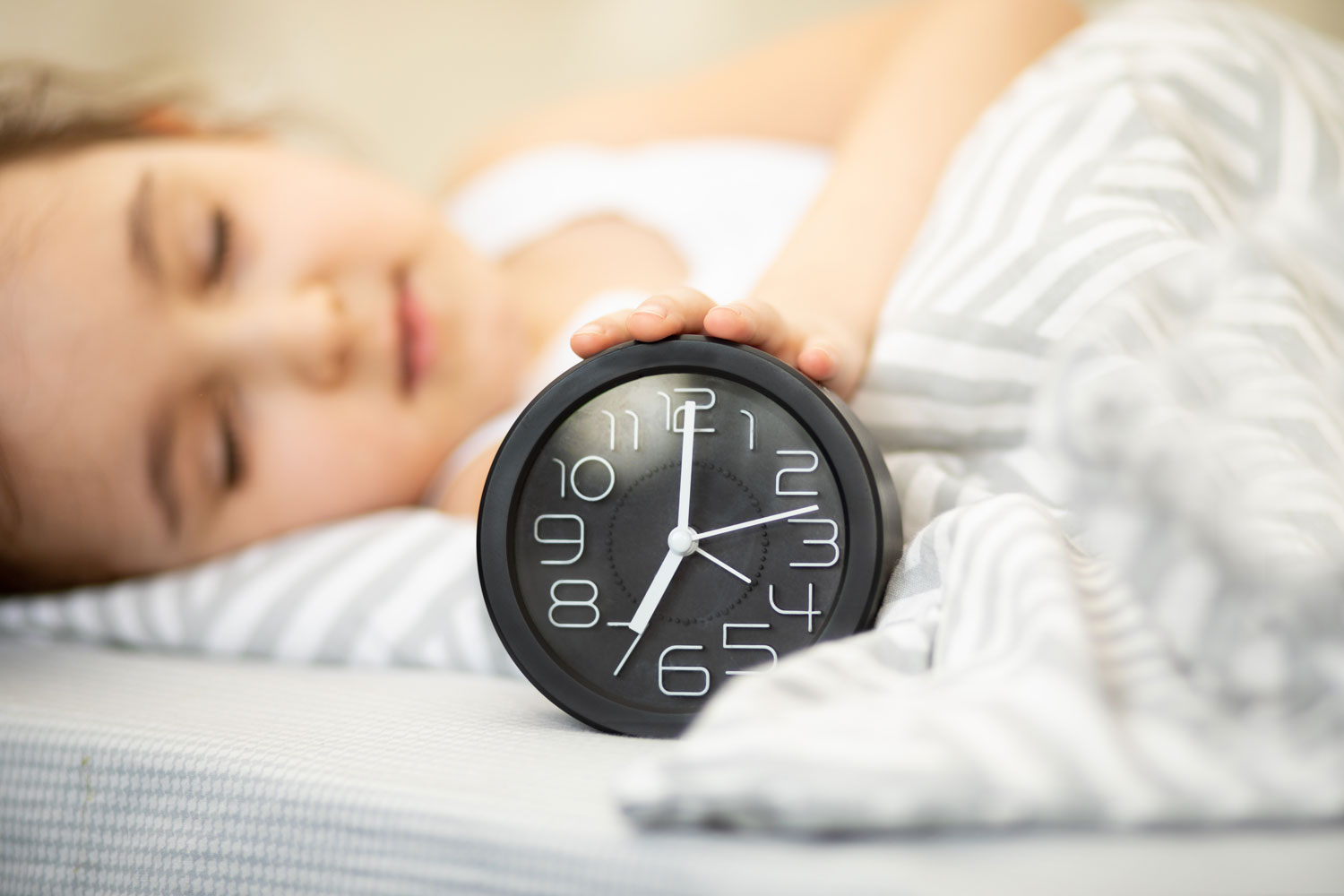
by Jayme Radomski | Aug 11, 2025 | Busyness, Cleaning, Closets, Clutter, Digital, Managing Time, Money & Paper Management, Organizing
As the final weeks of summer unfold, it’s the perfect time to pause, reflect, and set yourself up for a smooth transition into fall. Whether you’re preparing for a new school year, gearing up for a busy work season, or simply craving a more organized lifestyle, August offers a unique opportunity to reset. Before the routines of September return, take advantage of the slower pace and longer days to focus on these five areas of life that often need a little attention.
1. ⏰ Your Daily Routines
Summer often brings a welcome disruption to our usual schedules—but that flexibility can make it harder to return to structured routines in the fall. Use this month to gently realign your morning and evening habits:
• Start waking up and going to bed closer to your fall schedule.
• Review your current routines—what’s working, what’s not, and what can be simplified?
• Set time aside for planning your day or week ahead to reduce decision fatigue later.
Organizing your routines now will help you feel less overwhelmed when your calendar fills back up.
2. 💻 Your Digital Life
Digital clutter builds up fast—and unlike physical messes, it’s easy to ignore. Take a few hours this month to:
• Clear out your email inbox.
• Organize and back up your photos.
• Clean up your desktop, downloads folder, and apps you no longer use.
• Review subscriptions and delete what you don’t need.
A refreshed digital space can improve focus and help you feel more in control as you head into a busier season.
3. 🚪 Your Home Entry Points
The spaces that greet you when you enter or leave your home—like your mudroom, entryway, garage, or hallway closet—often get chaotic during the summer. Sandals, sunscreen, backpacks, and sports gear pile up. Take time to:
• Sort and store summer gear you won’t need daily.
• Designate spots for keys, bags, and shoes.
• Make room for back-to-school or fall essentials (think: jackets, lunch boxes, or umbrellas).
These high-traffic areas set the tone for your whole home—keeping them organized helps reduce stress.
4. 📅 Your Calendar and Commitments
The shift from summer freedom to fall obligations can feel jarring. Avoid calendar chaos by getting ahead now:
• Block out important dates (school starts, work deadlines, holidays, appointments).
• Reassess commitments—do they align with your goals and values?
• Make room for downtime, too.
An organized calendar empowers you to say “yes” to what matters and “no” to what drains you.
5. 🎯 Your Personal Goals
Remember those goals you set in January? Now’s a great time to check in and refocus:
• Review what you’ve accomplished and what still feels meaningful.
• Choose 1–2 realistic goals to work on before the end of the year.
• Break them into small steps and schedule time to act on them.
Organizing your goals keeps you motivated and intentional—especially before the rush of the holiday season begins.
The last month of summer doesn’t have to be all about winding down—it can be a launchpad. With a little time and intention, organizing these key areas will help you feel more grounded, productive, and ready for what’s ahead. So pour a glass of iced tea, grab a notebook, and give your life a little summer tune-up—you’ll thank yourself in September. Top Shelf Home Organizing would love help you finish the summer with peace.

by Jayme Radomski | May 21, 2024 | Cleaning, Clutter, Managing Time, Money & Paper Management, Organizing
We have crafted five areas to get your kids organized for the end of the school year. Get your kids involved for organizing and planning for summer break.
The end of the school year is an ideal time for kids to declutter their school supplies. Going through their backpacks, desks, and lockers to remove any old papers, broken items, and unused supplies helps create a fresh start for the next school year. Encourage kids to recycle or donate items they no longer need.
Sorting and storing school supplies for the summer can save time and money when the new school year begins. Labeling bins or boxes for different items such as notebooks, art supplies, and textbooks can make it easier to find them later. This also helps kids learn the importance of organization and responsibility.
Reviewing the school year’s work and reflecting on accomplishments and areas for improvement can be beneficial. This can involve going through graded assignments, reports, and projects to see what they did well and where they can improve. It’s a good opportunity for goal-setting for the next school year.
Keeping kids engaged in learning over the summer can prevent the “summer slide.” Planning educational activities, such as reading lists, science experiments, or museum visits, can keep their minds active. A summer schedule that balances learning with fun activities can help maintain a routine.
Establishing a summer routine can help kids transition smoothly from the structure of the school year to the more relaxed summer months. This routine can include set times for chores, reading, outdoor play, and family activities. A consistent routine helps kids feel secure and can make it easier to return to school in the fall.
These strategies can make the end of the school year a positive and organized experience for kids, setting them up for success in the coming year. Top Shelf Home Organizing is happy to help you organize your home for the summer.
by Jayme | Dec 15, 2021 | Clutter, Managing Time
By: Jena Ehlers, The Wellness Resolution
 Disorganization and clutter can affect you both mentally and physically. Having lots of clutter and being disorganized creates more stress in our lives. It can cause anxiety. Too much clutter can also cause troubles sleeping, poor eating choices, or even make it hard to dust causing allergies.
Disorganization and clutter can affect you both mentally and physically. Having lots of clutter and being disorganized creates more stress in our lives. It can cause anxiety. Too much clutter can also cause troubles sleeping, poor eating choices, or even make it hard to dust causing allergies.
How an Unorganized Space Creates Anxiety
After an exhausting day, it can be hard to relax when you see piles of papers, piles of boxes, surfaces cluttered with junk, clothing piled up, etc. You might not consciously feel anxious when you see the clutter, but you could be feeling it subconsciously. Just think about how you feel after you have cleaned your kitchen and everything is neatly put away. There is a sense of calm when you start cooking and nothing gets in your way.
I have noticed when I make sure to clear all the clutter on my coffee tables, end tables, fold blankets, and place all the pillows neatly on my couch before bed, I feel this sense of calm when I see my living room space in the morning. When I don’t my mood is less uplifting.
Harms Your Productivity and Focus
It can be harder to concentrate on one project at a time if you are not organized. Not only with not being organized with your work priorities, but just seeing clutter around you can be a distraction and make it harder to focus and remember things.
Sabotages Your Time
When you are in a rush to make a meal, find the perfect outfit for the day, and get out the door in the morning, being organized is a huge time saver! Just the thought that you might be late for work or another activity can create some anxious feelings. Being organized will help you make more efficient plans and save you time.
Anxiety from Items that Don’t Fit Your Space or Lifestyle
Items that don’t fit with the style of your living room, clash with the color palette you are trying to achieve, take up too much space, or remind you of a person you used to be, should be decluttered. These items can make you feel less happy, and your home should be a place that best represents you. The current you, not the past you. These items can also create unnecessary anxiety, and your home should be the place where you feel the most comfortable.
Items that Bring Bad Memories
Clutter could bring up bad memories either on a conscious or subconscious level. Maybe you have an item in your house that reminds you of a difficult time in your life, an item a friend gave you that you no longer speak to, or just an item that represents a former you. Seeing that item regularly could cause sadness, anger, or anxiety. So make sure to declutter items that no longer bring you any happiness, even if they are really unique or expensive.
At Top Shelf Home Organizing, we love to help busy households get organized. If you are looking for guidance on getting your home organized, reach out to Jayme.
by Jayme Radomski | Oct 22, 2020 | Busyness, Clutter, Managing Time, Organizing, Productivity, Saving Time
 I was recently asked by an organization I belong to, to share my inspiration to start a business. I then realized what a better audience than all of you to share that inspiration with, as well.
I was recently asked by an organization I belong to, to share my inspiration to start a business. I then realized what a better audience than all of you to share that inspiration with, as well.
Top Shelf Home Organizing started in 2014 after having a discussion with friends about what our dream job would be if we could do anything. After watching all their jaws drop when I said I would organize people’s closets and basements, I knew there was a need. Since then, my business has been effectively helping people organize their homes and offices, simplify their routines, and clear their schedules. I am personally involved in all projects and have six wonderful ladies that help on various projects.
We help busy families with projects that range from pantry organizing projects to full-home, plus storage units. Some individuals just need the accountability to get through an organizing project, and others need full-service help where we handle the complete organizing project.
I have always had a bit of an entrepreneurial mind. Going back to babysitting jobs, waiting tables, and working as a consulting engineer, I always tracked the time I spent on a project, the revenue each project brought in, how my job could be done more efficiently, and what types of projects brought the most value. I treated projects like my own little business.
After 15 years of professional experience working in various leadership roles, I knew it was time to do something I was passionate about. My youngest of four kids was about six months old, and I was in the thick of balancing parenting and a career. So I knew my skill set would be valuable to other busy professionals.
My favorite part of Top Shelf Home Organizing is the clients. It can be a very personal thing helping them to organize their home, basement, or closet. I often hear stories from their childhood, past careers, current life struggles, and their aspirations. It is not uncommon to get a message from a client on a Sunday afternoon asking how my kids are, how big our puppy is, or asking for a recommendation on a carpenter, decorator, or just a simple hello. Clients become friends.
If you want to learn more about Top Shelf Home Organizing or just want to chat about an organizing project you have going, you can find me at:
Phone: 262-373-9416
Email: jayme@topshelfhomeorganziing.com
Web: topshelfhomeorganizing.com
Facebook: https://www.facebook.com/topshelfhomeorganizing
Pinterest: https://www.pinterest.com/TopShelfHomeOrg/
Instagram: www.instagram.com/jaymeradomski
by Jayme Radomski | Feb 12, 2020 | Busyness, Managing Time, Productivity, Saving Time

You should protect your time with time blocking, regardless of your responsibilities. Whether you are a busy professional well into your career, a full-time caregiver to your family, or just juggling many responsibilities, blocking your time will set boundaries around your professional and personal time and allow you to maximize your productivity.
Blocking your time is a written reminder of where you need be, literally and mentally, at any time of the day. Time blocking allows you to focus deeply on the task that needs to be completed. For example, when you have time blocked for self care in your schedule, all you need to focus on in the self care time block is caring for yourself. Just like budgeting your money, time blocking makes you aware of how you spend your time (and where you waste your time). Time blocking is a written commitment to what you spend your time on.
To start time blocking, make a list of your daily tasks, this is a high level list. Each task may have multiple sub-tasks within it. We will address these later. This is just a list of what you should do everyday. As an example, here is a list of Jayme’s daily tasks. Included in the list are a couple items I would like to make time for (reading, a hobby and free time).
- Sleep
- Self care
- Family care
- Reading
- Exercising
- Work
- Email, Social Media
- Planning for tomorrow
- Free time
- Hobby
Combine smaller tasks into a task batch. Task batching is grouping smaller tasks into one chunk of time. This could include checking and responding to email, returning phone calls and checking social media. Another batch may include a few items that are complete during some personal time (reading, hobby and free time). A morning routine could also be batched, as these events naturally occur together and fit into a schedule by design (self care, family care and exercise). In this example, family care is also a batch. Family care may include cooking, mealtime, bathing, homework help, and carpooling.
Your work time is naturally where you would task batch items you need to complete to make money. Notice I wrote, “make money.” This is where you mark your time as busy to focus on the items that eventually pay your bills. You tell your assistant or whoever you work with that your door is closed, and non-critical family chats and conversations can wait. This is the time you focus on your work. There are other times of your day where you may mark yourself busy, as well. These times may be when you are physically not available such as sleep and exercise.
Day theming works well if you have large portions in each day that you need to dedicate to different areas to meet the same goal. For example, if you work from 9am to 3pm each day, you may want to dedicate one day for client meetings and client follow up, another day for writing, another day for administrative tasks, and two other days for marketing. If you have projects, there are days of the week you may need to dedicate to the one or many projects you have going on.
Time blocking takes planning and revisions. Your initial plan for a time block may need to be revised frequently in the beginning. Give yourself some grace. If you are not seasoned to planning your day, keep it very simple in the beginning and allow flexibility. Life if going to happen and your schedule may go astray. You will find peace though knowing that there is a daily plan, and if you stick to the plan productivity will happen. As your productivity increases and evolves, you will find more free time in your day and your week.
Time blocking can be done with a simple paper calendar or planner, or with an online calendar or application. I would recommend starting with a simple paper and pencil to plan your time. After getting used to the idea of scheduling your time into blocks, try a digital calendar or app where you can experiment with colors and tags.
If planning your time causes you stress and anxiety, Top Shelf Home Organizing would love to help you on your journey. Jayme can help you plan your time blocking, set your goals, and keep you accountable to meeting those goals.










